STARC4SYS was awarded at the "Gala Of Excellence", organized by the Italian group Intesa Sanpaolo Bank.
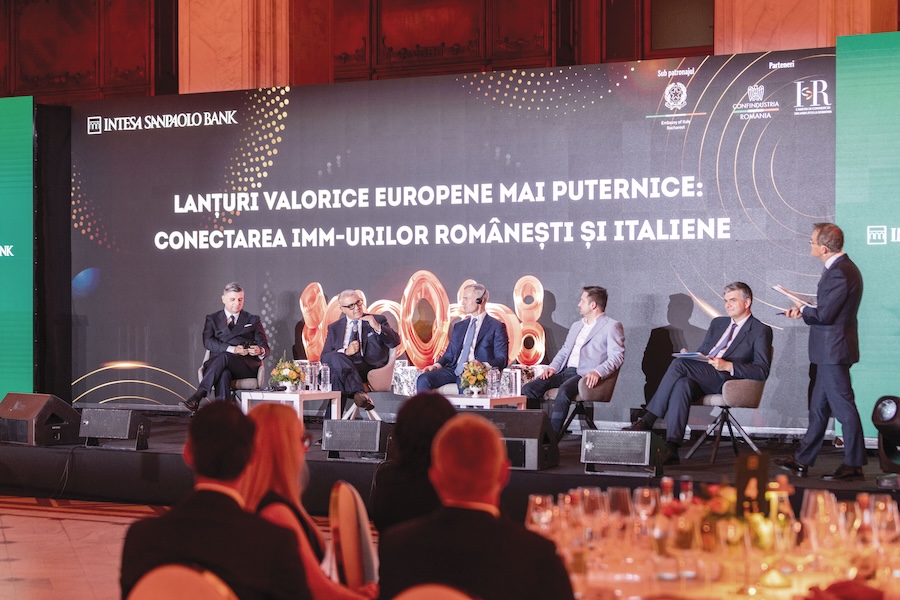
Photo: Ziarul Financiar
♦ "The partnership between Italy and Romania is one of the strongest and most dynamic in Europe." ♦ "For us at Intesa Sanpaolo Bank, it has become an obvious choice to focus on serving small and medium-sized enterprises and corporations in Romania to ensure that they can thrive." ♦ "Even if we have some problems, we need to start thinking like a developed economy because in a few months we will be there. All the systems we have—financing, compliance, clusters, European funds—need to start thinking like a developed and competitive country." ♦ "Intesa Sanpaolo Bank can be successful and make a major contribution to the Romanian banking landscape. I believe that the main reason you should focus more on Romania is that there are still opportunities and room for growth."
Intesa Sanpaolo Bank Romania, a subsidiary of the Italian banking group of the same name, which recently acquired First Bank on the local market, organized the "Gala of Excellence" event, where Romanian and Italian officials discussed the development directions of the financial sector and the growth potential of small and medium-sized enterprises (SMEs).
"The partnership between Italy and Romania is one of the strongest and most dynamic in Europe. Romania is Italy's second largest economic partner in Eastern Europe, with a volume of approximately €20 billion at the end of 2021," said Alfredo Maria Durante Mangoni, Italy's ambassador to Romania, at the 2025 Excellence Gala event organized by Intesa Sanpaolo Bank.
He emphasized that the bilateral relationship is supported by nearly 50,000 Italian companies operating locally and by the community of over one million Romanians living in Italy.
Following the integration of First Bank, Intesa Sanpaolo Romania's next objective is to expand rapidly and consolidate its position among the top local banks.
"For us, it became a fairly obvious choice to focus on serving small and medium-sized enterprises and corporations in Romania to ensure that they can thrive. In the next five years, Intesa Sanpaolo will be in the top five in Romania," said Giuseppe Ferraro, head of the corporate and SME department, International Banks Division, at the event.
At the same time, a major challenge remains the lack of financial education, especially in rural areas. "We see talented people, we see potential, but too many do not have the knowledge necessary to manage their savings properly and achieve a good return. This is where we can step in to create value and facilitate their access to finance. Of course, financing always remains a challenge, but we understand the mechanisms, we respect the local framework, and we work with institutions and authorities to find the best solutions to support the economy," added Ferraro.
In order to increase their relevance, Italian banks should also focus their attention on the capital market, according to Alexandru Petrescu, president of the Financial Supervisory Authority (ASF).
"You should definitely take a serious look at the Romanian capital market. There is plenty of room for additional investment. I believe that Intesa Sanpaolo Bank can be successful and make a significant contribution to the Romanian banking landscape," said Alexandru Petrescu.
In addition, the official highlighted the role of economic clusters and Italian communities in Romania, which can generate programs dedicated to sectors with potential, such as crafts. Moreover, while the tax environment remains a competitive advantage for Romania, the high concentration of micro-enterprises requires a careful approach.
"Of the 55,000 Italian companies, 24,000 are active, and around 9,000 are highly active and sustainable. But 90% of the industrial structure in Romania consists of micro-enterprises, and we must be very careful about the impact of the tax system on this sector," emphasized Roberto Musneci, representative of the Italian Chamber of Commerce.
Support for SMEs from the authorities has intensified significantly in recent years. "For SMEs, we are talking about 32 billion lei last year in state aid, of which 92% went to the SME sector," explained Răzvan Orășanu, representative of the Competition Council. He added that the financing scheme for women entrepreneurs and for investments in new technologies contributes to the maturation of the economy.
Another key point for increasing competitiveness is the development of clusters. "Romania has over 700,000 active companies, and less than 1% are in cluster networks. Supporting Romanian companies in partnership with other companies in Europe and Italy is one of our goals," said Ciprian Morcan, vice president of ClusteRO, pointing out that the involvement of the banking sector can bring real added value.
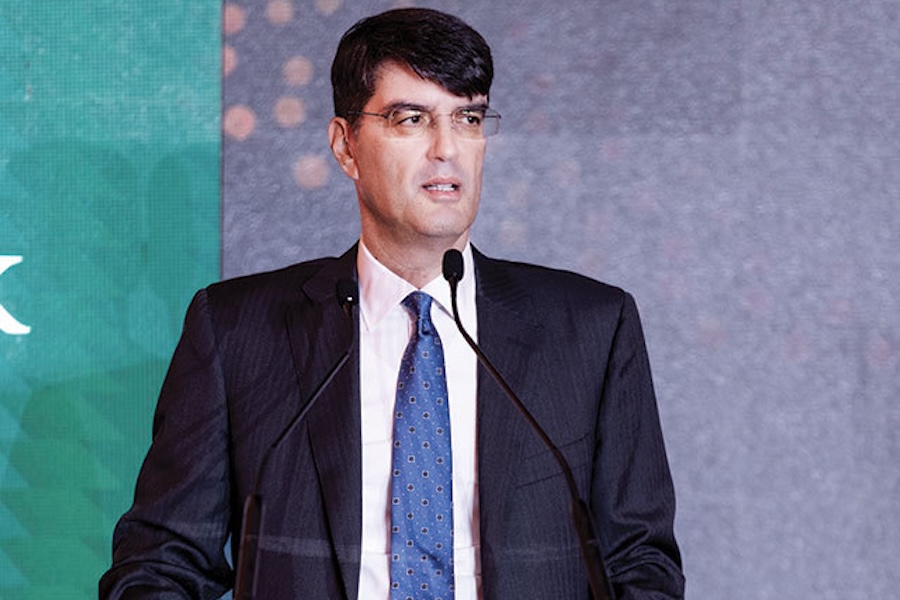
Alessio Cioni, CEO, Intesa Sanpaolo Bank Romania (ISPRO)
Photo: Ziarul Financiar
► Tonight's speakers shared important insights on the role of small and medium-sized enterprises (SMEs) and the importance of Romanian-Italian cooperation in strengthening European value chains.
► Tonight, however, we are not just talking about opportunities. We are celebrating the courage, innovation, and determination of those who turn ideas into reality and generate progress for business and society, even in difficult economic and geopolitical times.
► You - entrepreneurs, leaders, innovators - are building a vibrant, diverse, and dynamic business landscape. Romania has the talent, vision, and determination to build a stronger and more sustainable future.
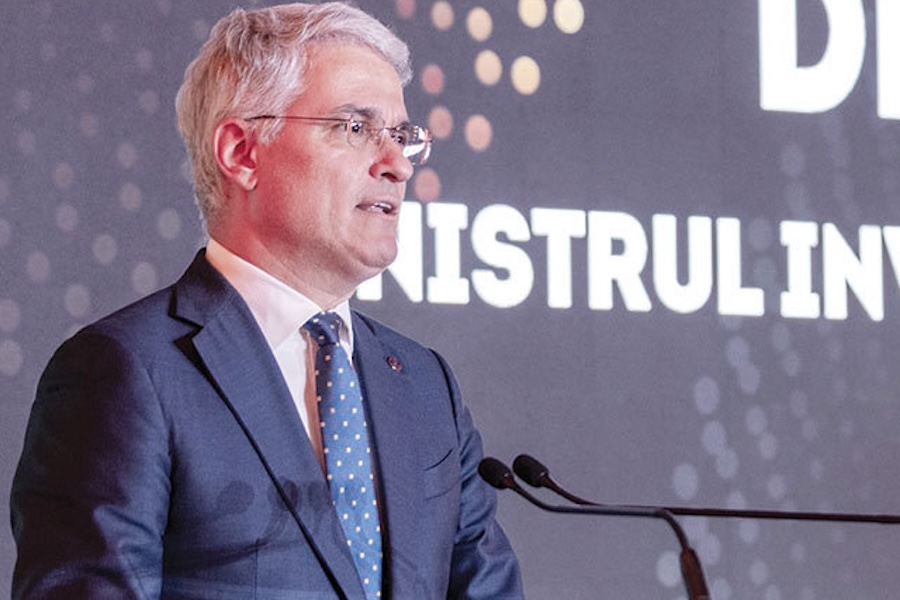
Dragoş Pîslaru, Minister of Investment and European Projects
Photo: Ziarul Financiar
► Small and medium-sized enterprises are the backbone of Romania's economy, with the capacity to drive Romania forward. SMEs account for over 29% of companies in Romania and over 62% of jobs.
► The PNRR has around 17,000 projects—from fortified castles, bike paths, hospitals, highways, to church renovations. Over 5,000 SMEs have been contracted under the PNRR, with over €1.15 billion, and in addition to this amount, we have $1.25 billion in investment capital that has reached another 2,000 SMEs through banks and investment funds.
► Money is a necessary but not sufficient condition. Romania's development will depend on human capital, and unfortunately we need skills. If we consider digital skills, only 21% of Romanians have them, compared to a European average of 55%.
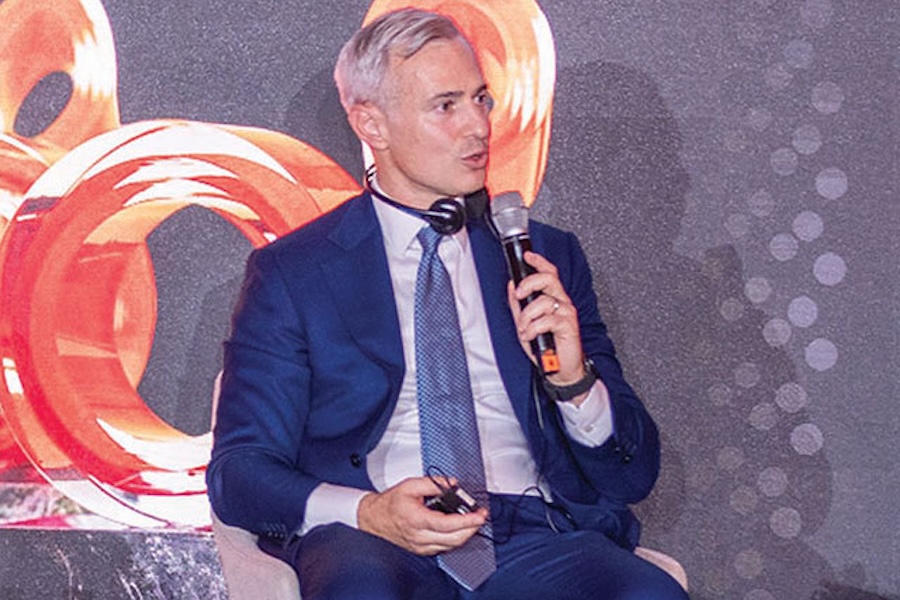
Giuseppe Ferraro, șef al departamentului corporativ și IMM-uri, Divizia Bănci Internaționale Intesa Sanpaolo
Photo: Ziarul Financiar
► For us, it became a fairly obvious choice to focus on serving small and medium-sized enterprises (SMEs) and corporations in this country (editor's note: Romania), to ensure that they can prosper. In the next five years, Intesa Sanpaolo will be in the top five in Romania.
► One of the challenges is that we need to bring financial literacy to rural areas. This is essential. We need it now and we will always need it. The money is there. We see talented people, we see potential, but too many do not have the knowledge they need to manage their savings properly and get a good return. This is where we can step in, to create value and facilitate their access to finance.
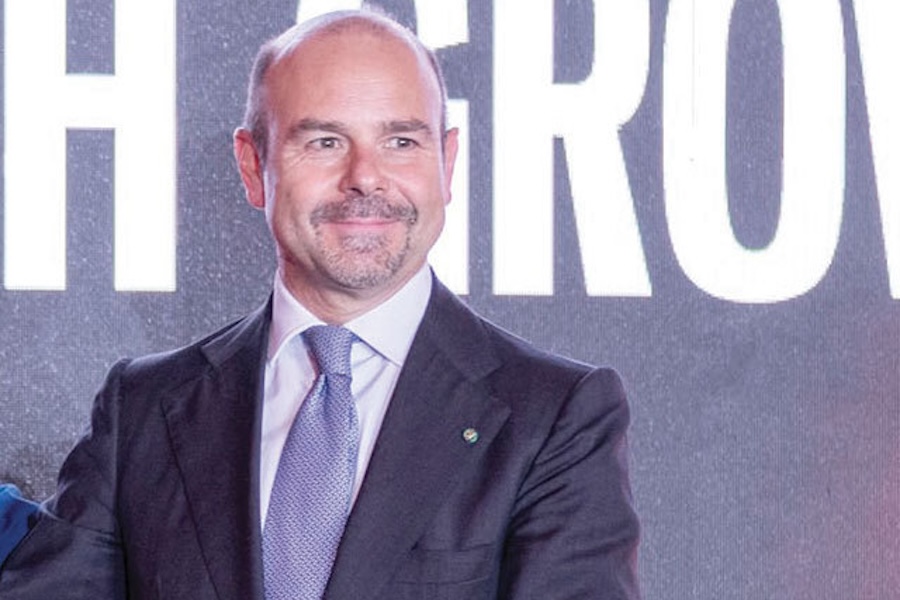
Alfredo Maria Durante Mangoni, Ambassador of Italy to Romania
Photo: Ziarul Financiar
► The partnership between Italy and Romania is one of the strongest and most dynamic in Europe. For Italy, Romania is its second largest economic partner, with a volume of approximately €20 billion at the end of 2021.
► Romania is a country undergoing change, and this change can only take place through solid financing and the involvement of financial institutions. I would like to congratulate Intesa on its acquisition of FirstBank, a source of pride for all Italian institutions in Romania.
► The strategy of the Italian banking system is another component that will enable the full development of the local industry.
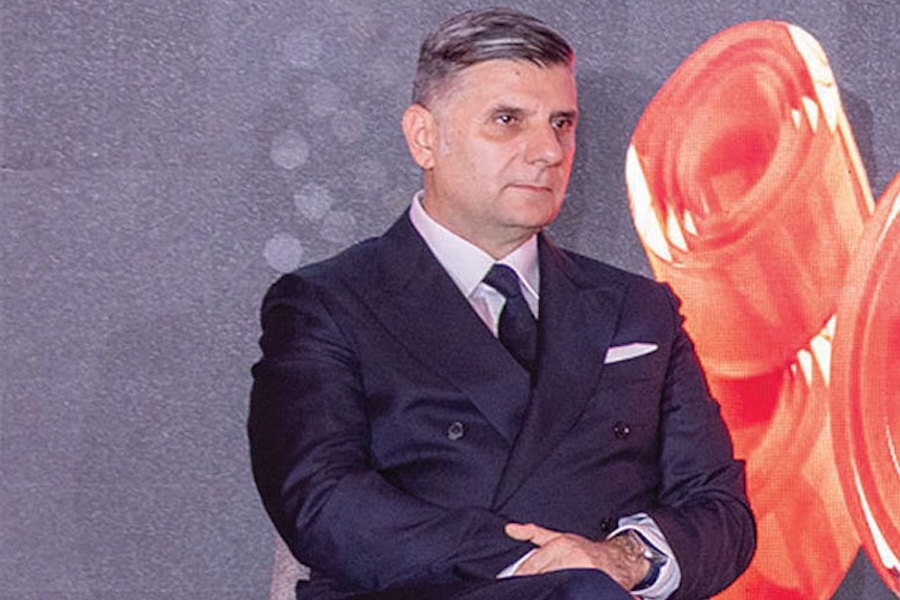
Alexandru Petrescu, President of the Financial Supervisory Authority (ASF)
Photo: Ziarul Financiar
► I know that Alesio (editor's note: CEO of Intesa Sanpaolo Bank Romania) had an important mission to integrate a banking entity (editor's note: First Bank). I hope he keeps up the pace and grows in relevance in the Romanian banking sector.
► We are trying to draw some parallel lines in time, economic and social, about what clusters mean in Romania compared to Italian communities, and together we have identified several areas, such as crafts, and we are trying to create dedicated programs.
► You should definitely take a serious look at the Romanian capital market. There is plenty of room for additional investment. I believe that Intesa Sanpaolo Bank can be successful and make a significant contribution to the Romanian banking landscape. So, I think the main reason why you should focus more on Romania is that there are still opportunities and room for growth.
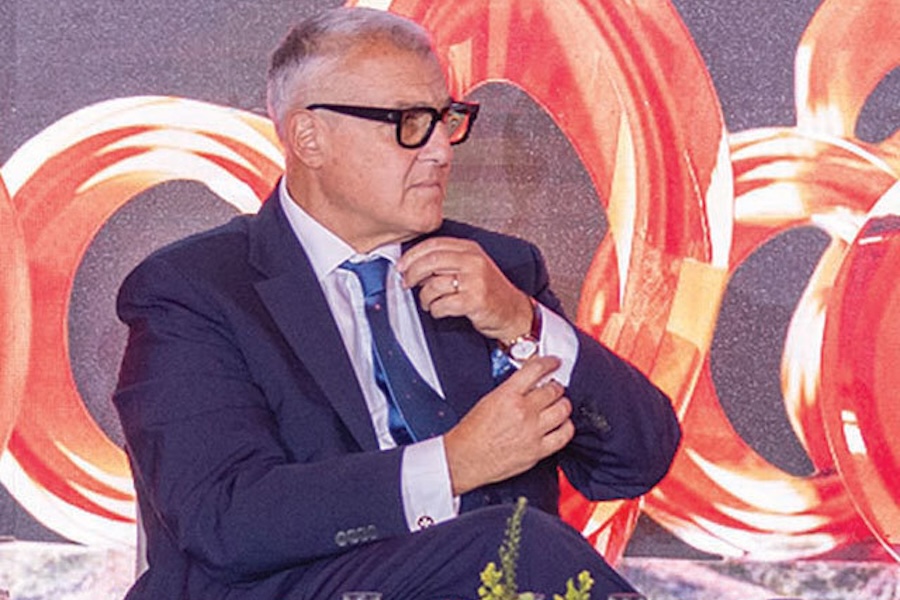
Roberto Musneci, Italian Chamber of Commerce for Romania
Photo: Ziarul Financiar
► It is clear that Romania has developed exponentially. In Romania, out of the 55,000 Italian companies, 24,000 are active, and around 9,000 are very active and sustainable. However, 90% of Romania's industrial structure consists of micro-enterprises, and we must be very careful about the impact of the tax system on this sector. The tax system has been extremely friendly compared to other tax systems in other countries and markets.
► There are several important elements to consider, first and foremost the transfer of skills. There are three important elements for Romania's economic development system: the tax system, the SME sector, and opportunities to facilitate labor migration.
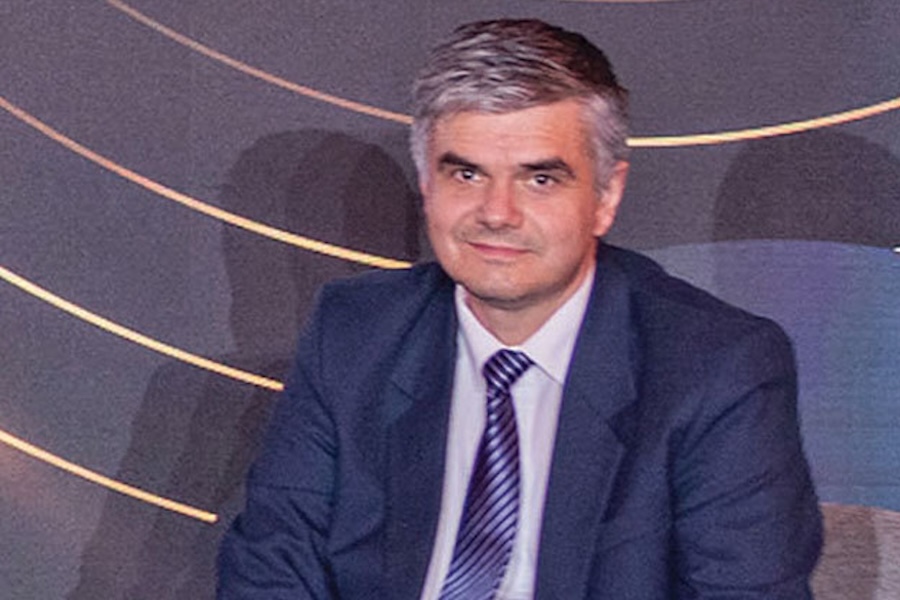
Răzvan Orăşanu, Competition Council
Photo: Ziarul Financiar
► For SMEs, we are talking about 32 billion lei in state aid last year, of which 92% went to the SME sector, and that is important news. Twenty-one years ago, when I started my career, I could not have imagined that we would have such figures. The second thing is that there were schemes for women entrepreneurs, there were support schemes for the labor market, and investment schemes for new technologies. These things are important for the national economy and Romanian-Italian cooperation. In 21 years of activity, Italian investors have been among the most serious.
► Even if we have some problems, we need to start thinking like a developed economy because in a few months we will be there. All the systems we have - financing, compliance, all the clusters, European funds - all need to start thinking like a developed and competitive country.

Ciprian Morcan, VP, ClusteRO (Romanian Cluster Association)
Photo: Ziarul Financiar
► The Romanian Cluster Association has 55 initiatives — some more developed with examples of good practice at European level, coordinating projects with direct funding from the European Commission and with less visible activity at national level, but this is also because we have over 700,000 active companies in Romania and only less than 1% are in cluster networks at the moment.
► Supporting Romanian companies in partnership with other companies in Europe and Italy is one of Romania's goals and one of the actions it is carrying out within clusters. So there is room for improvement. But I am glad that the banking sector is looking at this area because there are projects with real added value, which are based on a strategic approach and innovation.

Photo: Ziarul Financiar
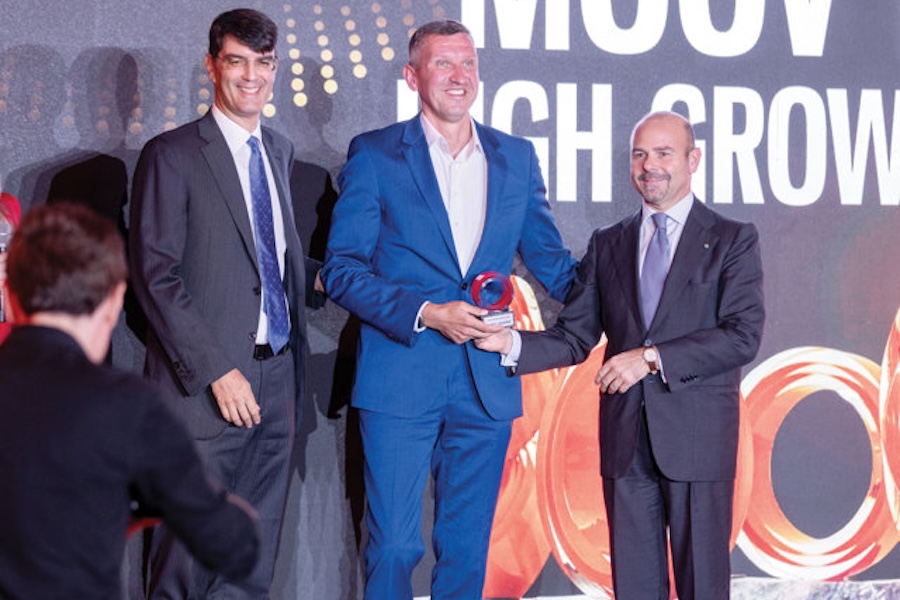
Photo: Ziarul Financiar
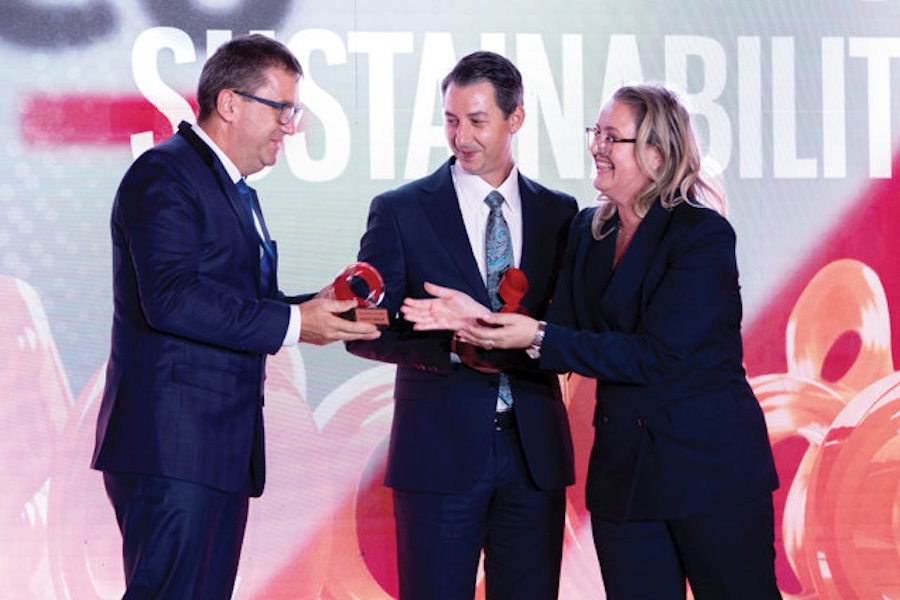
Photo: Ziarul Financiar
Representatives of the award-winning companies took to the stage to collect their trophies.
https://www.zf.ro/special/grupul-italian-intesa-sanpaolo-bank-dupa-preluarea-first-bank-in-22911084